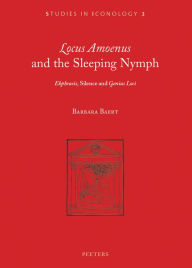'Locus amoenus' and the Sleeping Nymph: 'Ekphrasis', Silence, and 'Genius Loci'
by B Baert
2020-05-07 17:22:32
'Locus amoenus' and the Sleeping Nymph: 'Ekphrasis', Silence, and 'Genius Loci'
by B Baert
2020-05-07 17:22:32
In his late 15th century chronicle (ca 1477-1484), Michael Fabricius Ferrarinus (died between 1488-1493), prior of the Carmelite cloister in Reggio Emilia, introduced the rumour that an ancient fountain had been found super ripam Danuvii (on the bank...
Read more
In his late 15th century chronicle (ca 1477-1484), Michael Fabricius Ferrarinus (died between 1488-1493), prior of the Carmelite cloister in Reggio Emilia, introduced the rumour that an ancient fountain had been found super ripam Danuvii (on the banks of the Danube) with the sculpted figure of a sleeping nymph. According to Ferrarinus, the fountain bore a peculiar epigram: HVIVS NYMPHA LOCI, SACRI CVSTODIA FONTIS, DORMIO, DVM BLANDAE SENTIO MVRMVR AQVAE. PARCE MEVM, QVISQVIS TANGIS CAVA MARMORA, SOMNVM RVMPERE. SIVE BIBAS SIVE LAVERE TACE. Many scholars have discussed the impact of the rumour as creating a prototype for Renaissance sculptures of the sleeping nymph in Rome and for the development of the well-known genre of the sleeping Venus in painting. Building upon the previous studies, this essay contextualizes the phenomenon of the sleeping nymph and its textual and artistic Nachleben from the point of view of the locus amoenus as silence. This study combines iconological, aesthetical-philosophical and anthropological approaches, and contributes to a better understanding of sleep, voyeurism, water and silence within the context of the nymph's particular genius loci.
Less









.jpg)


.EBOOK COVER.jpg)







.jpg)








